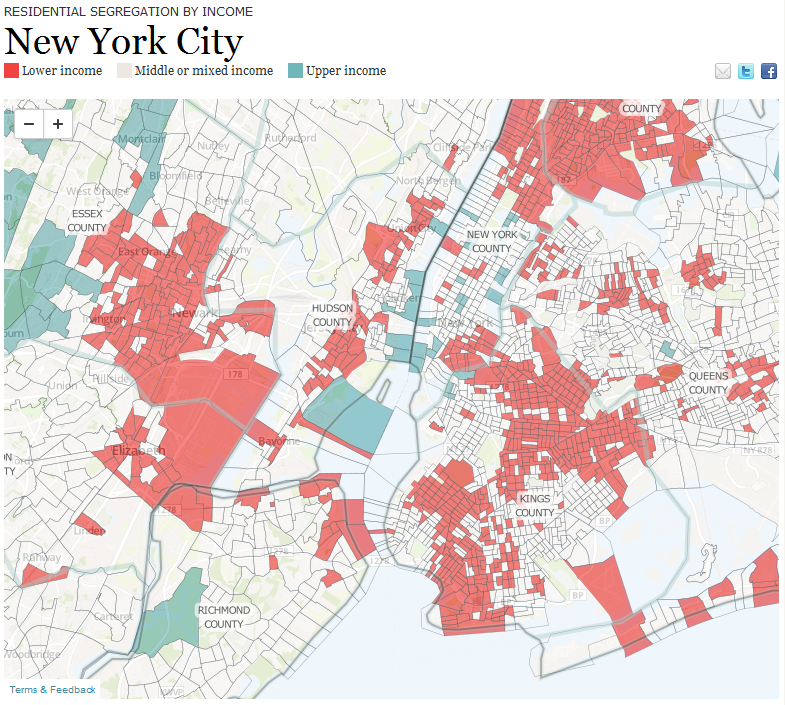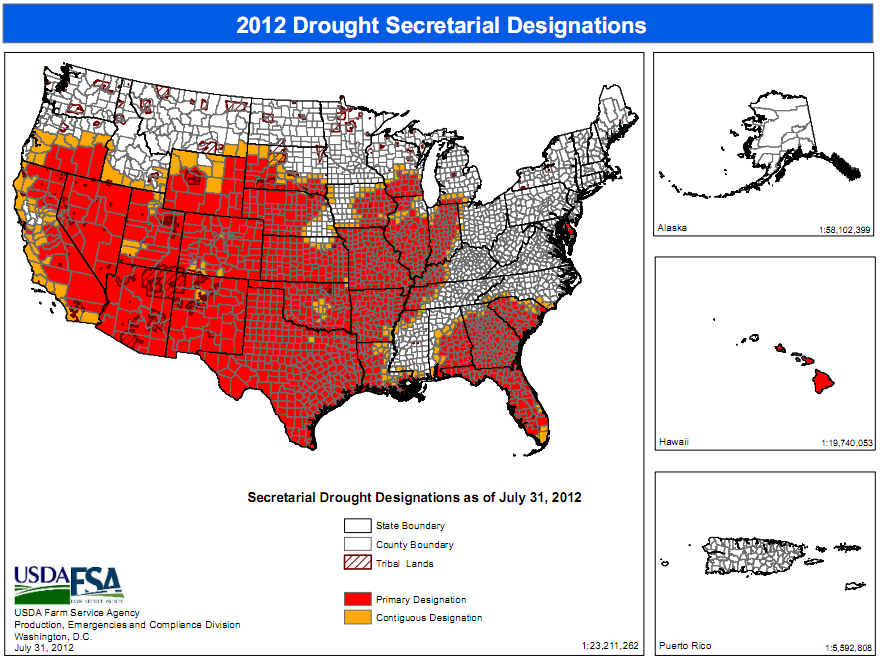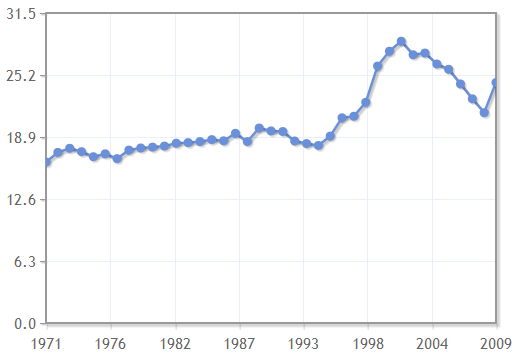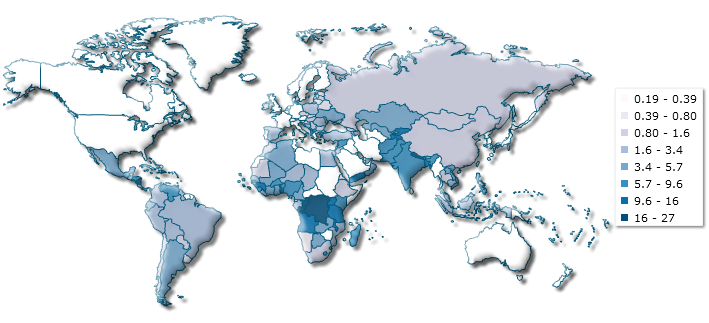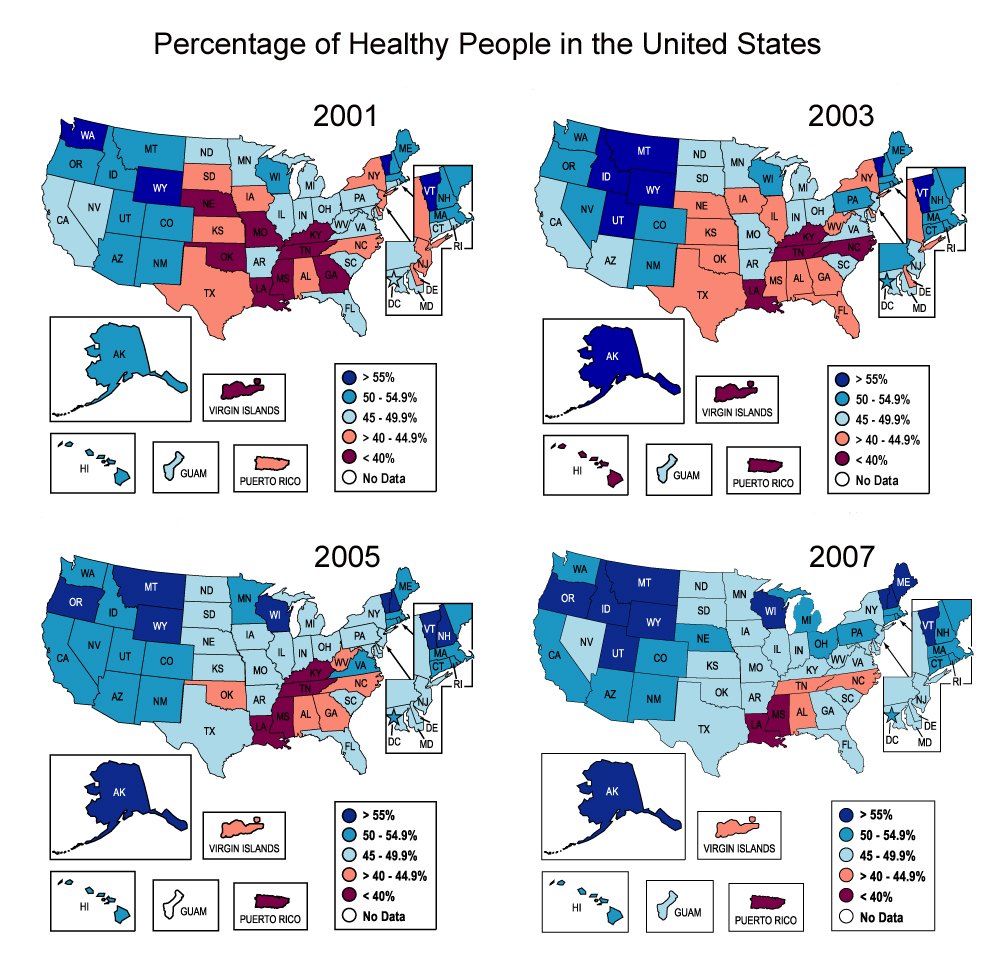 According to data from the Center for Disease Control and Prevention (CDC), most states have become healthier in terms of physical activity for the years between 2001 and 2007, excluding Louisiana and Mississippi which have less than 40% of healthy residents.
According to data from the Center for Disease Control and Prevention (CDC), most states have become healthier in terms of physical activity for the years between 2001 and 2007, excluding Louisiana and Mississippi which have less than 40% of healthy residents.
The CDC defines as “healthy people” those who engage in moderate-intensity physical activity at least 5 days a week for 30 minutes a day, or those who engage in vigorous-intensity physical activity at least 3 days a week for 20 minutes a day.
It is interesting to note, though, that data displayed on these maps tells a different story than data for the obesity rate in the United States. As we showed on a previous post, the obesity rate in the U.S. has been rising steadily since at least 1991. There is a clear contradiction between the rise in obesity rates and the rise in the percentage of healthy people.




